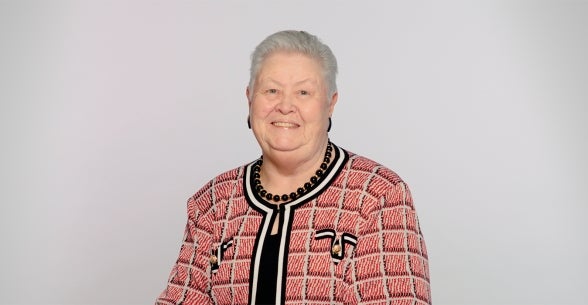
Navigating change and driving innovation: A roadmap to Sustainable Development Goals (SDGs) for business success
06/20/23Amidst significant changes in the private sector, companies and leaders must navigate and manage these transformations to safeguard their financial success and brand reputation.
Simultaneously, businesses need to prioritize innovation and positive change within their organizations. By actively engaging with the agenda for sustainable development, companies can address pressing challenges related to shifting economic landscapes, environmental transitions, and social transformations.
Corporate risks and responsibilities
Companies must also recognize the corporate risks and responsibilities associated with crises like climate change and inequitable health and education. Despite the magnitude of these challenges, they also offer unique opportunities for businesses to lead the way in pioneering transformative solutions.
The importance of sustainable innovation
Since 1985 — when Michael Porter introduced the "inputs-throughputs-outputs" linear framework — the business environment has become increasingly responsive to rapid changes in the world, including the demands of increasingly informed and value-driven consumers. In this global and digital marketplace, businesses must execute a sustainability strategy to maintain their competitive edge, relevance, and innovativeness.
SDGs: Roadmap for a better world and progress measurement
The Sustainable Development Goals (SDGs), adopted by United Nations Member States in 2015, provide a roadmap for delivering a better world and a yardstick for measuring progress. The SDGs are divided into three categories:
- Social
- Environmental
- Overarching
Universal best practices: sustainable implementation, learning outcomes
Ideally, companies identify the SDGs relevant to their goals and then engage in sustainable innovation to achieve them. In a collaborative whitepaper with a team of Thunderbird professors and UN Global Compact Network members, my Thunderbird School of Global Management at Arizona State University colleagues and I outline universal best practices, implementation examples, and learning outcomes. This whitepaper also includes actionable steps for companies to lead in the future as a force for good.
SDG innovation continuum
SDG innovation can occur along a continuum of interventions that vary by the desired impact target and focus. Companies can engage in more than one style of innovation, addressing multiple SDGs one by one, sequentially, or simultaneously.
Companies can also pursue an evolutionary approach, making minor changes to their existing business model, or a transformational approach, moving beyond their current activities and business model. Companies can have a focused or diffused scope and an internal or external targeted focus.
Based on these dimensions, we identified four types of SDG Innovators.
Revolutionary innovators
Revolutionary Innovators drive broad market reach and create new opportunities through breakthrough innovations like recycling or refurbishment options, aligning with the principles of the circular economy framework.
VF Corporation implemented a process of collecting used boots, refurbishing them, and reselling them in a secondary market. Owens Corning has showcased their commitment to sustainable practices by exploring the conversion of used roofing material into asphalt for roads or reclaiming it as core components for manufacturing.
Evolutionary innovators
Evolutionary Innovators focus on narrow, internally oriented, and low-risk continuous improvement. It is often an adaptation of existing innovations used by other organizations, serving as a first step toward a sustainability-supportive mindset.
Examples of evolutionary innovators include Wheel Pros’ use of recyclable materials in their packaging and Lamborghini's establishment of a process for employees to collaborate and bring forward sustainability ideas within the company.
Transformational innovators
Transformational Innovators are externally focused, high-risk SDG innovators aiming for high-impact, disruptive innovation in technology, product, service, or business model. It aligns with the regenerative framework and often requires moral courage from company leadership. Examples include BMS's mental health wellness program and EcoVadis's impact measurement tool.
Sustaining innovators
Sustaining Innovators are focused on internal process improvement that supports the company's current position in the market, which can lead to significant changes in a firm's business model. This approach can fit within the net zero framework and may include boundary-spanning activities within their supply chain or with industry partners.
Colgate-Palmolive, Wesco, and Univar Solutions are examples of companies implementing sustaining innovation to reduce carbon footprint, optimize supply chain processes, and improve resource efficiency.
SDGs in action – innovation accelerator
To accelerate progress and help companies engage with and adapt to the SDGs, the UN Global Compact, through their Network USA affiliate, created the SDG Innovation Accelerator Program for Young Professionals. The initiative guides organizations to become sustainability innovation change agents.
Equipping young professionals to align SDGs with business strategy
The SDG Innovation Accelerator is a nine-month program that uses a cohort-based approach to increase SDG awareness and critical thinking skills among high-potential junior (under 35) employees.
Program participants identify SDG-related challenges or opportunities within their company, develop a solution, and build an implementation plan through workshops designed to create space for innovation. The program develops novel sustainability solutions and drives long-term talent development by equipping young professionals to contribute to aligning SDGs with business strategy.
Enabling SDG innovation to take root in companies
The SDG Innovation Accelerator has identified best practices that enable SDG innovation to take root in companies. The first set of practices focuses on creating the context for SDG innovation, while the second set focuses on how leaders can shepherd the SDG innovation process.
Core SDG business concepts
Core business concepts that enable innovators to make the business case for SDG innovation include:
- Strategic alignment
- Resource mapping
- Environmental scanning
- Benchmarking
- Understanding innovation and creativity
Key concepts
Key concepts include stakeholder management, identifying and communicating the value proposition, and developing an implementation plan. Once these concepts are understood, working groups can begin recommendation development, testing, pitch development, and implementation planning.
Unlocking SDG innovation
Creating an environment conducive to innovation is crucial for companies and their SDG innovators, regardless of their position on the SDG Innovation Continuum. There are methods businesses and leaders can employ to make innovation more likely to flourish and stick.
Create a clear business case for pursuing SDG innovation
Leaders must first understand the significance of the SDGs in their company and how they can contribute to competitive advantage, customer growth, profitability, cost reduction, and talent acquisition.
By identifying motivations and aligning them with specific SDGs, organizations and their leaders can establish a solid business case that accelerates the adoption of SDG innovation.
Commit to change leadership
Evolutionary innovation requires less change, while revolutionary and transformational innovation demands profound changes. Before pursuing these paths, ensure senior leadership's total commitment and provide them with a supportive team.
Allocate resources to SDG innovation
To drive successful SDG innovation, allocate resources and prioritize its importance. Include time for innovators to focus on their work and a reward system that motivates and recognizes their efforts. It's vital to align ambition with achievability, adjusting project scopes if necessary due to resource limitations.
Having a dedicated project champion and support from senior leadership is crucial for project success and gaining buy-in throughout the organization.
Get educated on SDGs and core business concepts
Provide training on the SDGs and relevant business concepts to individuals involved in the project, even if they don't work directly in sustainability or corporate responsibility. Many people within the company may have limited knowledge of the SDGs.
Providing appropriate education generates support and understanding for the initiatives.
Assess the reward system and corporate culture
To support SDG innovation, create a culture that recognizes and rewards efforts beyond the norm. Incorporate SDG innovation into performance appraisals and provide career development opportunities for aspiring innovators.
Encourage a learning-oriented culture that views failure as a stepping-stone to success rather than a career-limiting setback.
Build a diverse SDG innovation team
Team composition is vital for successful SDG innovation. You can foster creative friction and generate innovative ideas by assembling a diverse team with varied backgrounds, experiences, and perspectives. It's essential to prioritize enthusiasm for sustainability and a shared motivation to drive impact.
Instead of rushing towards quick solutions, ask challenging questions that will lead to strategic foresight and long-term success.
Commitment in action
Companies and leaders must navigate the changes in the private sector while prioritizing innovation and positive change. Engaging with SDGs provides a roadmap for addressing global challenges and presents opportunities for businesses to pioneer transformative solutions.
By learning from and embracing the stories and practices in "Aligning Business Innovation with the Sustainable Development Goals: Success Stories," companies can drive impact, achieve competitive advantage, and contribute to a sustainable future.
Commitment to SDGs in higher education
In the competitive higher education space, Thunderbird School of Global Management at Arizona State University is committed to the advancement of the United Nations' SDGs through its:
- Curriculum
- Research
- Thought leadership
- Partnerships
- Student engagement
- Events
- Sustainable practices
Advancing SDG initiatives
Thunderbird contributes to the advancement of sustainable development and prepares future global leaders to address the complex challenges of the 21st century. An important part of this contribution is through courses and experiential learning opportunities that explore topics such as social entrepreneurship, responsible business practices, and sustainable development strategies.
Learn more about Thunderbird School of Global Management Solutions for a New Era.




